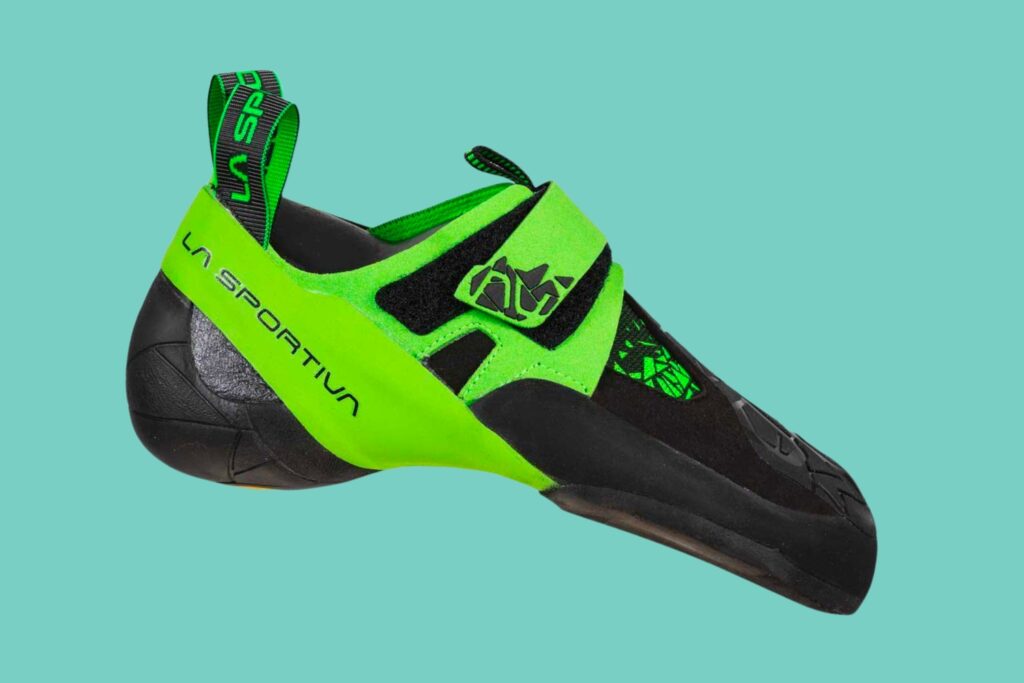Sport Climbing: The Ultimate Gear List (2024 Guide)

Published on: 01/25/2023
Last updated on: 06/01/2023
When most people think of rock climbing, they inadvertently think of sport climbing. Sport climbing is one of the most popular disciplines of climbing. Most climbers love sport climbing because of the sport’s relative safety, the accessibility of sport climbing cliffs, and the gear.
If you were to compare the required gear to go sport climbing to other climbing styles like trad climbing or aid climbing, the sport climbing gear list would be much smaller. Therefore, sport climbing tends to have a less prominent barrier to entry, similar to bouldering.
Keep reading if you are getting into sport climbing or reconsidering the gear you’ve already collected. We will share our ultimate sport climbing gear list to help you take your climbing to the next level.
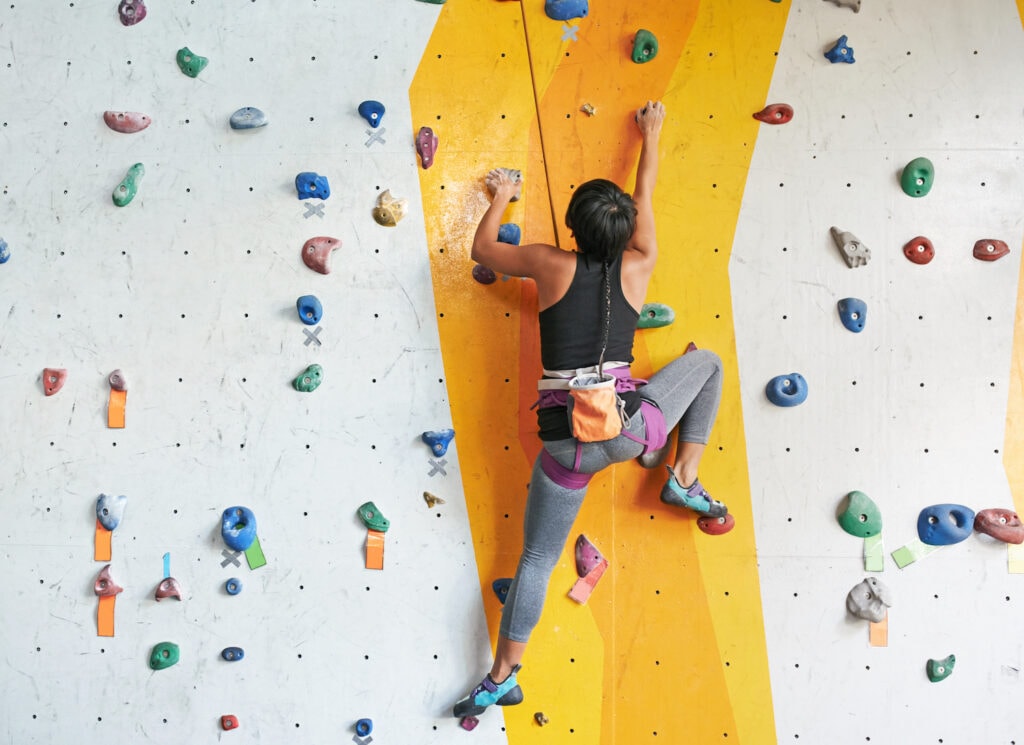
What Is Sport Climbing?
Sport climbing is a style of climbing where a lead climber ties into a climbing rope and leaves the ground without a top rope anchor. As the leader ascends, they clip quickdraws into pre-placed bolts drilled into the rock. Ideally, the bolts are placed at certain intervals and in comfortable stances so the climber is well-protected in the event of a fall.
A lead belayer uses a belay device on the ground to manage the rope. They give slack to the lead climber so that they can clip quickdraws. They take away slack when the climber doesn’t need it. If the lead climber does fall, they will fall past their most recently clipped quickdraw and be caught by the belayer braking the rope with their belay device.
When the lead climber completes the route, they install an anchor, most often two quickdraws, to the two bolts at the top of the climb. Then, the belayer lowers the climber to the ground.
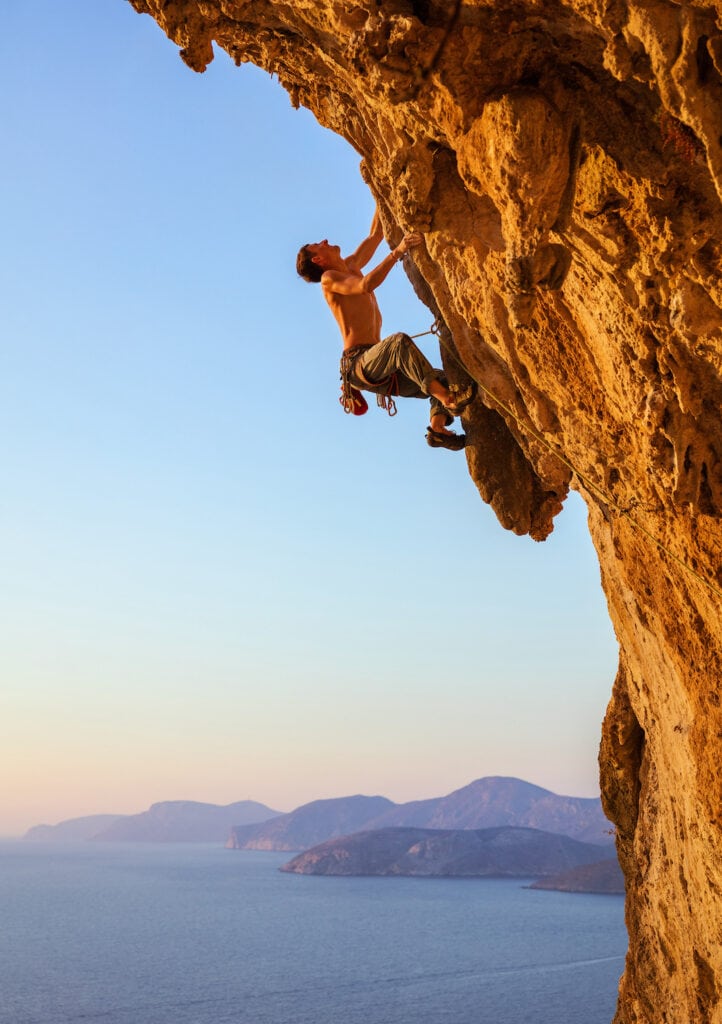
Safety Reminder
Climbing is an inherently risky sport. Therefore, proper education and training, and routine risk management practices, such as double-checking, must be performed to mitigate the inherent risks of climbing.
Learning about sport climbing from an online article such as this is an excellent way to start climbing as a beginner or reinforce what you already know. However, reading about climbing can only ever embolden one’s conceptual knowledge of the sport. It cannot replace hands-on practice under the direct supervision of a well-seasoned mentor or professional climbing guide.
Also, always pack a first aid kit, even if you’re going to a crag near a road without much approach.
Gear List
There are a lot of reasons to love rock climbing. One of those reasons is the gear.
Rock climbers are naturally drawn to the equipment. Something is awe-inspiring about rock climbing gear as it continues to evolve and become lightweight yet more robust, more colorful higher performing, and hyper-specialized.

In other words, rock climbers are gearheads. They love to collect gear and customize their kits following their preferred style of climbing and personal preference. That’s why there are thousands of ways to complete a sport climbing checklist.
Our sport climbing gear list is a great place to get started. You can follow our recommendations, but don’t be afraid to mix it up and customize your sport climbing kit.
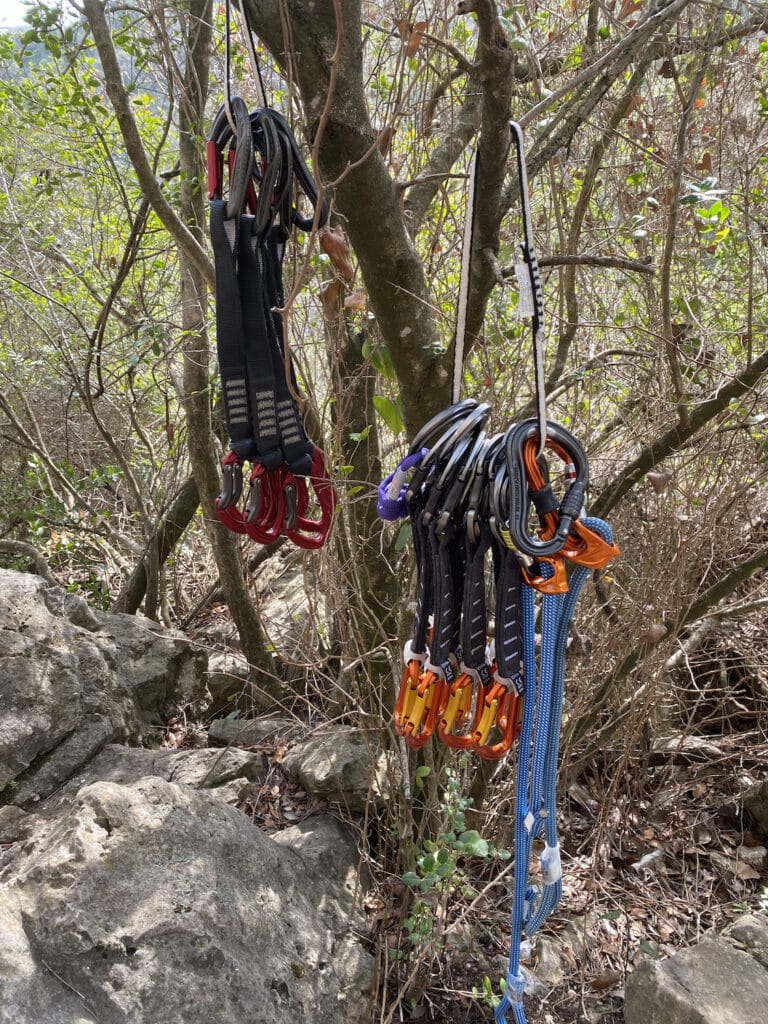
Required Items
Climbing Helmet
Many practitioners don’t consider helmets as mandatory pieces of equipment. We hear this a lot from climbers who primarily enjoy top roping.
However, in our opinion, helmets are non-negotiable. A climbing helmet protects your head in the event of nasty falls and from falling rocks, belay devices, and other overhead hazards.

The best helmet is the one that fits your head correctly. Ideally, it will be designed for climbing. However, a cycling helmet can be used in a pinch. The helmet must fit snuggly on top of your head, protect your forehead, and be appropriately tightened so it cannot shake loose. The Petzl Sirocco is a fan favorite.
Rock Climbing Harness
You cannot go sport climbing without a harness. Harnesses have come a long way over the years. They have continued to become stronger, safer, and accommodate a wider array of body types. Harnesses are now even being designed for specific styles of climbing.
Like a helmet, an adequately fitted climbing harness should fit snuggly above your waist bones. When tightened, the harness should not be able to slip down. The harness’ leg loops should fit comfortably around your legs and be tightened to your liking.
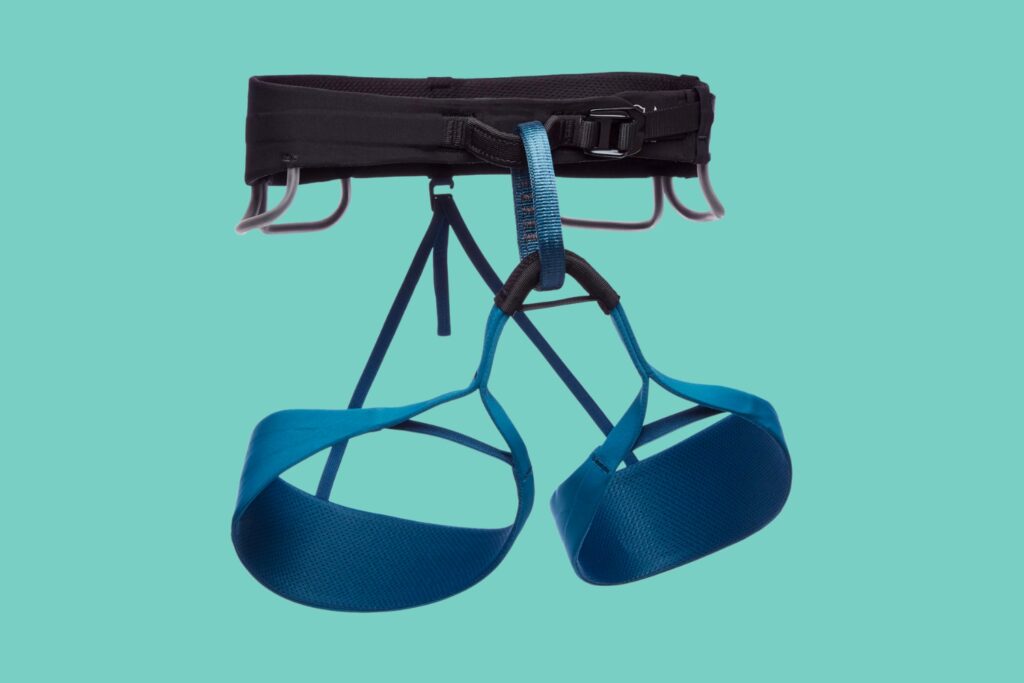
Most modern climbing harnesses come with a double-backed waist strap. However, you should still include a harness inspection in your double-checks. The Black Diamond Solution Harness is the perfect harness for beginner sport climbers.
Climbing Chalk and Chalk Bag
The friction between your fingers and the rock can be drastically reduced by moisture (sweat) on your hands. For that reason, climbers wear chalk bags to help dry their hands before and during a climb.

There are many different brands of chalk on the market. Some people swear by a certain chalk brand, while others buy the cheapest chalk possible. Over time you will develop your own personal preference. The same goes for your chalk bag.
Quickdraws
Quickdraws are a sport climber’s best friend and consist of two non-locking carabiners linked together by a sewn webbing called a dog bone. They connect the climber’s rope to the bolt drilled into the wall.
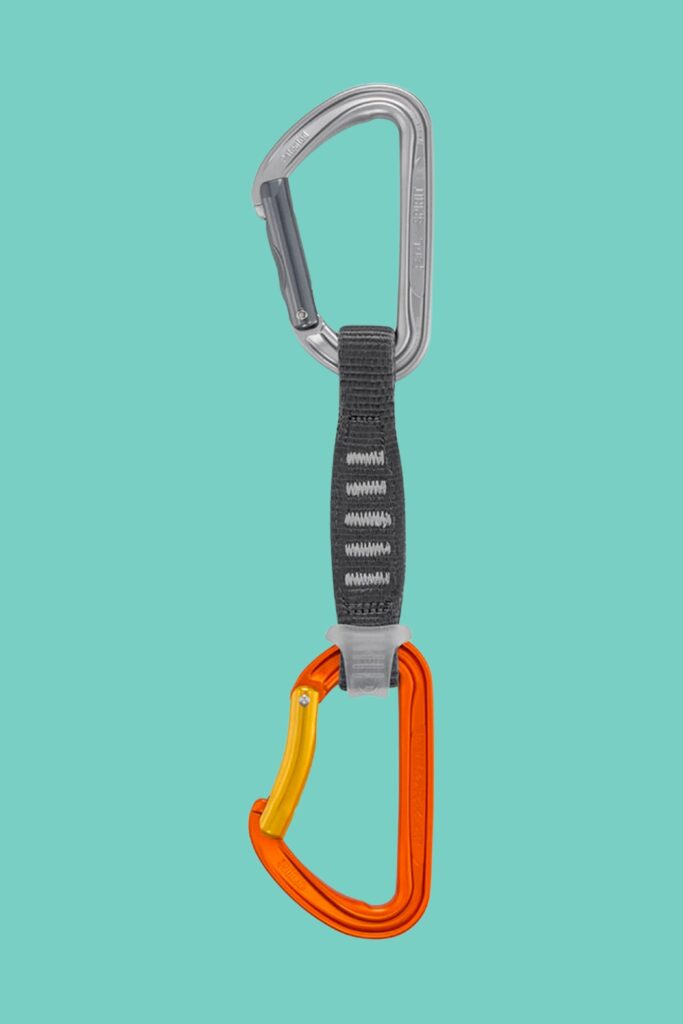
There are many shapes, sizes, and styles of carabiners. Typically, quickdraws are sold in packs of six. A complete rack of draws is often considered to be twelve. However, when you set off lead climbing, bring enough draws for every bolt and maybe an extra or two. Petzl Spirit Express quickdraws are present at nearly every sport crag.
Belay Device and Locking Carabiner
In sport climbing, you are often belaying when you are not climbing. Therefore you should have your belay device and locking carabiner. We recommend investing in a belay device that is considered an assisted braking device, like the Black Diamond Pilot.

Belay devices designed with an assisted braking mechanism provide extra security and reduce the risk of a catastrophic fall if the belayer loses control of the brake strand. There are a variety of belay devices on the market, each with its advantages and drawbacks. Take the time to research and select the correct device that matches your preferred style of climbing.
Rock Climbing Shoes
A good pair of rock shoes is one of the most important pieces of equipment. Climbing shoes give your feet traction and stability on the wall. They utilize sticky rubber that allows you to stand on blank slabs of rock and the tiniest edges.
Whether trying a sport route indoor or outside on real rock, finding a climbing shoe that fits your feet comfortably and matches your climbing style is indispensable for your sport climbing checklist. La Sportiva, Scarpa, and Tenaya (to name a few) have many shoes to help you tackle overhanging rock or vertical slabs.
Dynamic Climbing Ropes
Whether you are gym climbing, frequenting outdoor sport crags, or attempting longer routes, one thing is for sure– a climber’s rope is their lifeline.
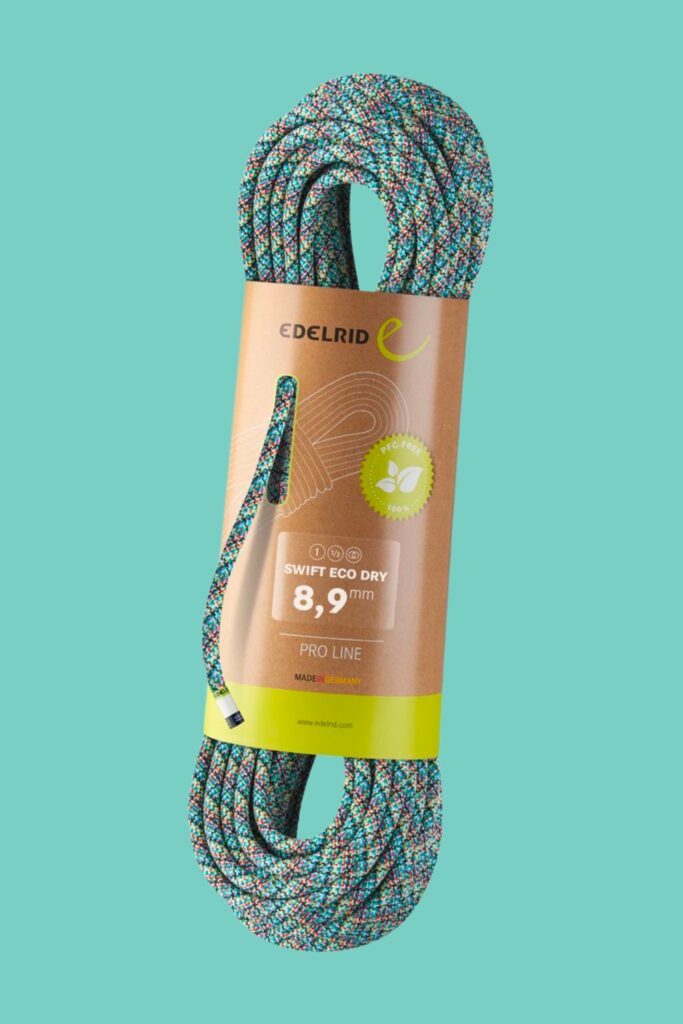
Modern dynamic climbing ropes are designed to withstand incompressible amounts of force to protect the climber in the event of a fall. To absorb shock and soften the fall, dynamic ropes stretch. Modern ropes are also constructed with abrasion-resistant materials to prevent cutting.
If you think you might get caught in a storm or want to go ice climbing, we recommend a rope with a dry treatment. Dry-treated ropes repel water more effectively and don’t allow as much water to soak into the core.

Optional Items
- Belay glasses to mitigate the wear and tear on your neck while belaying.
- Belay gloves for protection and control.
- Supplemental anchor building gear includes locking non-locking carabiners, sewn slings, and cord. A personal anchor like the Petzl Connect is also a great piece of sport climbing gear to have.
- A pair of approach or hiking shoes to get to and from the crag.
- A rope bag or rope tarp to insulate your rope from the dirty ground for more convenient carrying
- A good old backpack or dedicated climbing backpack (with an integrated rope bag, for example) for carrying gear, water, and food.
- A Stick clip to mitigate the risk of ground falls and for projecting hard sport routes.
- An old carabiner to leave behind if you need to bail on a route.
- Climbing clothes, including sturdy climbing pants and a UV protection shirt if you go to a particularly sunny crag.
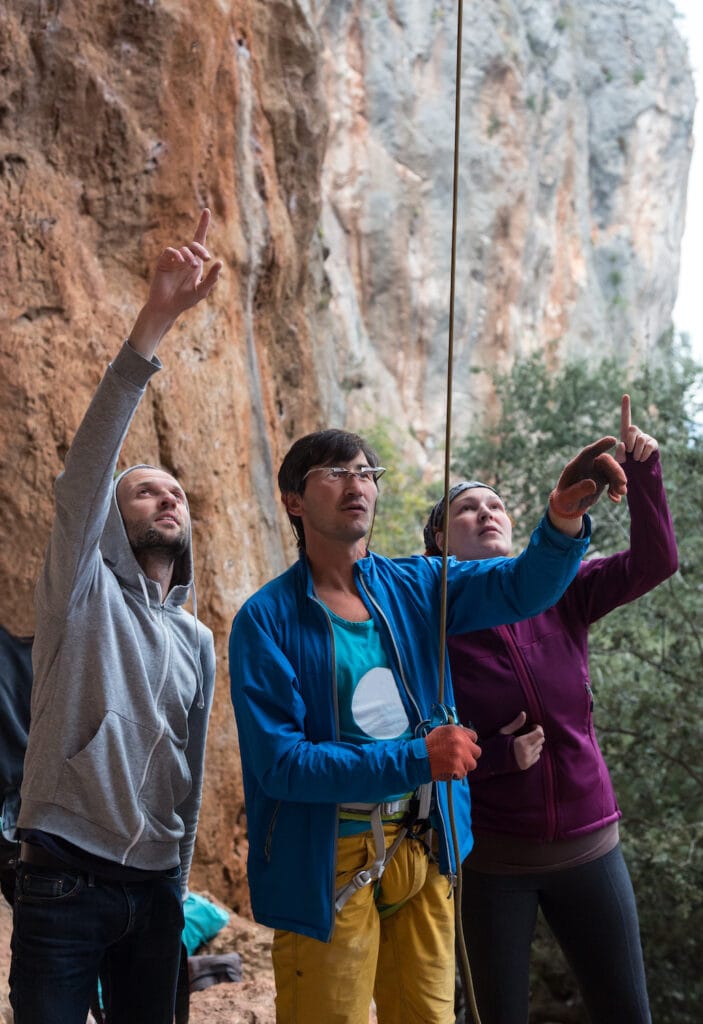
Final Thoughts
Investing in climbing gear is a big deal. It’s not like going shopping for new clothes. It’s not just for looks. Your new gear will help keep you safe as you get deeper into your climbing hobby.
To sum things up, we’d like to give you some advice.
- Take your time researching climbing gear and find what works best for you.
- When getting started, refrain from buying second-hand climbing gear.
- If possible, learn to use and try out your climbing gear in a more controlled setting, like a climbing gym, before taking it outside.
Have fun with your new climbing gear. Be safe, and always remember your double-checks.
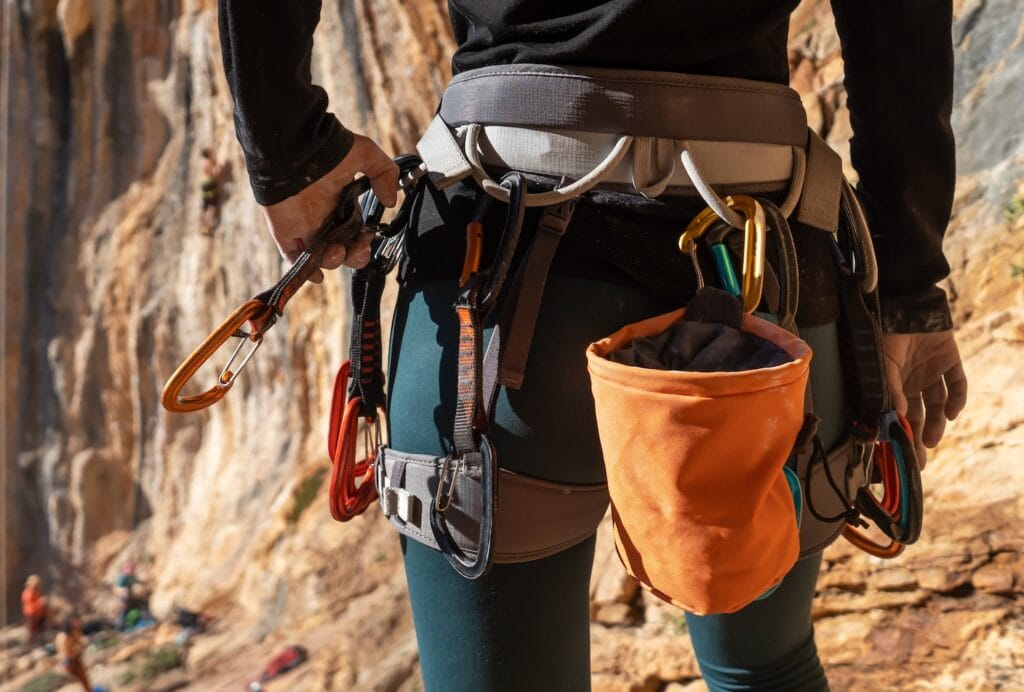
Frequently Asked Questions (FAQs)
Sport climbing is an inherently dangerous sport. However, sport climbing is often considered safer compared to other climbing styles like trad climbing, aid climbing, or multi-pitching. This is due to the routes having pre-drilled protection.
No, gloves are optional for belaying. However, they can provide more control and protect your hands from dirty ropes and rope burns.
Modern sport climbing harnesses typically only have two gear loops to carry quickdraws. If you want, consider one with four gear loops instead to carry more gear or have a more versatile model.
An approach shoe is not mandatory for sport climbing. However, they can make your life easier. Many sport climbers like them for scrambling over rocks, loose dirt, and descents from multi-pitch routes.

